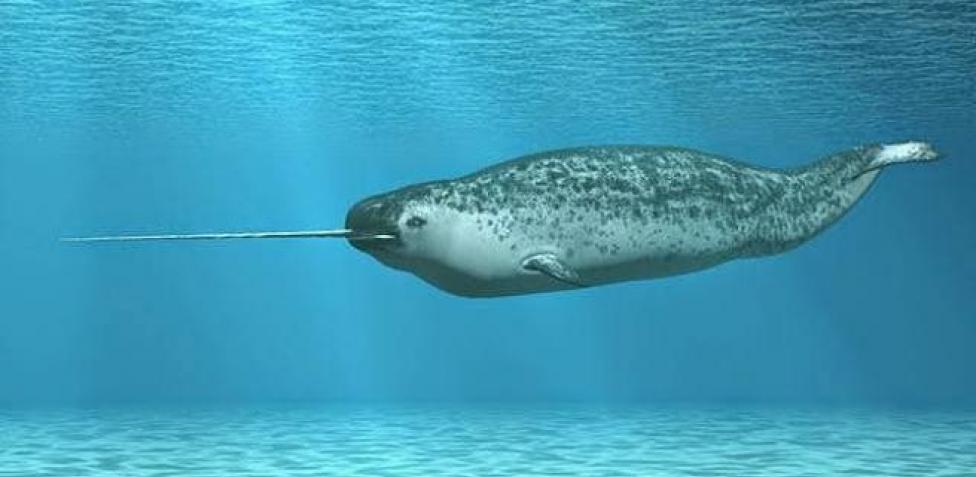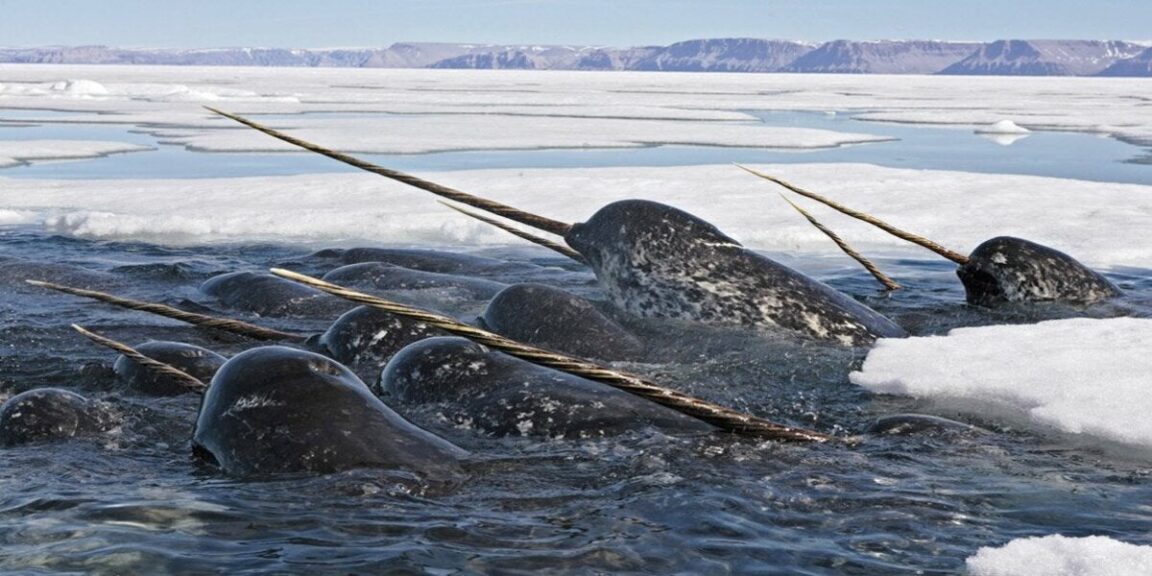The giant tusk of the sea unicorn has a function that no one knew, the cetacean known as the sea unicorn, use its long and unique tusk to hit and stun fish before eating them.
The giant tusk of the sea unicorn has a function no one knew about
Scientists in Canada have obtained the first images that would demonstrate that male narwhal (Monodon monoceros), the cetacean known as the marine unicorn, use their long and unique tusk to strike and stun fish before eating them.
Over the past few decades, several hypotheses have been put forward as to the function of the narwhal’s unique helical tusk.
Possible explanations included the use of this tusk as a defense (against attacks by sharks, polar bears and killer whales), as a weapon for fighting between males, as a tool for piercing surface ice or even as a sensor of water temperature and salinity conditions.
Images now obtained with the help of drones by experts from Fisheries and Oceans Canada (DFO), the University of Windsor, World Wildlife Fund Canada, the Vancouver Aquarium and Arctic Bear Productions show a group of narwhals swimming peacefully in the waters of Tremblay Sound, in the Canadian province of Nunavut.
Detailed observation of these images show that the narwhals rapidly move their tusks to strike and stun small fish, which they then devour. The explanation now presented does not preclude some of the other hypotheses about the function of the tusk of the unicorn of the seas from also being true.
An iconic species in Canada
“The narwhal is an iconic and culturally significant species in northern Canada and the newly documented feeding behavior will open new perspectives on how best to protect the species for future generations. It serves as a concrete example of how we are advancing marine science,” noted Dominic LeBlanc, Minister of Fisheries, Oceans and the Canadian Coast Guard.

David Miller, president and CEO of WWF-Canada, noted that “documenting this novel behavior of a complex and difficult to study species inhabiting such a challenging environment is absolutely incredible.”
“Combining traditional observations of animal behavior with the footage that can be obtained with drones and new data analysis systems offers comprehensive tools to improve the conservation of iconic aquatic species,” added Miller.




